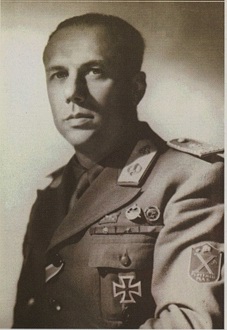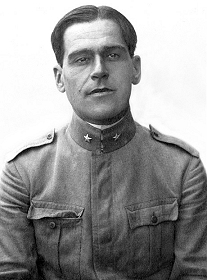
Unexploded ordnance, unexploded bombs (UXBs), and explosive remnants of war are explosive weapons that did not explode when they were employed and still pose a risk of detonation, sometimes many decades after they were used or discarded. When unwanted munitions are found, they are sometimes destroyed in controlled explosions, but accidental detonation of even very old explosives also occurs, sometimes with fatal results. A dud is an unexploded projectile fired in anger against an enemy, but which has failed to explode. A projectile not fired in anger but which has failed to explode is called a 'blind'.

Pula, also known as Pola, is the largest city in Istria County, Croatia, and the seventh-largest city in the country, situated at the southern tip of the Istrian peninsula in northwestern Croatia, with a population of 52,220 in 2021. It is known for its multitude of ancient Roman buildings, the most famous of which is the Pula Arena, one of the best preserved Roman amphitheaters. The city has a long tradition of wine making, fishing, shipbuilding, and tourism. It was the administrative centre of Istria from ancient Roman times until superseded by Pazin in 1991.

A magazine is an item or place within which ammunition or other explosive material is stored. The word is taken originally from the Arabic word makhāzin (مخازن), meaning "storehouses", via Italian and Middle French.

The Decima Flottiglia MAS was an Italian flotilla, with commando frogman unit, of the Regia Marina created during the Fascist regime.

The Piazza Fontana bombing was a terrorist attack that occurred on 12 December 1969 when a bomb exploded at the headquarters of Banca Nazionale dell'Agricoltura in Piazza Fontana in Milan, Italy, killing 17 people and wounding 88. The same afternoon, another bomb exploded in a bank in Rome, and another was found unexploded in the Tomb of the Unknown Soldier. The attack was carried out by the far-right, neo-fascist paramilitary terrorist group Ordine Nuovo and possibly certain undetermined collaborators.

The Bologna massacre was a terrorist bombing of the Bologna Centrale railway station in Bologna, Italy, on the morning of 2 August 1980, which killed 85 people and wounded over 200. Several members of the neo-fascist terrorist organization Nuclei Armati Rivoluzionari were sentenced for the bombing, although the group denied involvement.

Marquis Luigi Durand de la Penne was an Italian Navy admiral who served as naval diver in the Decima MAS during World War II. He was born in Genoa, where he also died.

COMSUBIN is the Italian Navy's special operations unit.
There have been many extremely large explosions, accidental and intentional, caused by modern high explosives, boiling liquid expanding vapour explosions (BLEVEs), older explosives such as gunpowder, volatile petroleum-based fuels such as gasoline, and other chemical reactions. This list contains the largest known examples, sorted by date. An unambiguous ranking in order of severity is not possible; a 1994 study by historian Jay White of 130 large explosions suggested that they need to be ranked by an overall effect of power, quantity, radius, loss of life and property destruction, but concluded that such rankings are difficult to assess.

Naval warfare in the Mediterranean during World War I took place between the naval forces of the Entente and the Central Powers in the Mediterranean Sea between 1914 and 1918.
Camp Doha was the main U.S. Army base in Kuwait, and played a pivotal role in the U.S. military presence in the Middle East since the 1991 Gulf War and in the 2003 invasion of Iraq. The complex is located on a small peninsula on Kuwait Bay, west of Kuwait City. It was initially a large industrial warehouse complex and was taken in hand by the U.S. Army for conversion to its current role in 1998 during Operation Desert Thunder.

The Adriatic Campaign of World War I was a naval campaign fought between the Central Powers and the Mediterranean squadrons of Great Britain, France, the Kingdom of Italy, Australia, and the United States.

Raffaele Rossetti was an Italian engineer and military naval officer who sank the main battleship of the Austro-Hungarian Empire at the end of World War I. He was also a politician of the Italian Republican Party.
A sympathetic detonation, also called flash over or secondary/secondaries (explosion), is a detonation, usually unintended, of an explosive charge by a nearby explosion.

The Raid on Pula was a maritime raid undertaken on 1 November 1918 at the end of World War I. It was carried out with a manned torpedo by two officers of the Italian Regia Marina, Raffaele Paolucci and Raffaele Rossetti, with the goal of damaging what they thought was an Austro-Hungarian fleet anchored in the bay of Pula.
The bombing of the British Embassy at Porta Pia in Rome was a terrorist action perpetrated by the Irgun that occurred on 31 October 1946. Two timed explosives encased in suitcases were planted by the Embassy's front entrance; the resulting blast injured two people and damaged the building's residential section beyond repair. The Irgun targeted the Embassy because they considered it an obstacle to illegal Jewish immigration into Mandatory Palestine. One of the Irgun's intended targets, ambassador Noel Charles, was away on leave during the attack. It was quickly determined that foreign militants from Mandatory Palestine were behind the attack and under pressure from Great Britain, the Italian police, Carabinieri and the Allied Police Force rounded up numerous members of the Betar organization, which had recruited militants from among the displaced refugees. Confirming fears of the expansion of Jewish terrorism beyond Mandatory Palestine, the bombing of the Embassy was the first attack against British personnel by the Irgun on European soil.
The Malga Sasso bombing was a major bomb attack on an Italian Guardia di Finanza outpost not far from the Brennero pass, in the Province of Bolzano, near the border with Austria. The attack was carried out on 9 September 1966 by members of the South Tyrolean Liberation Committee (BAS), a paramilitary organization seeking the independence of German-speaking South Tyrol from Italy. Two guards were killed by the blast on the spot, while a third died of wounds several days later. Three others were seriously injured. The separatist militants Alois Larch, Alois Rainer and Richard Kofler were prosecuted and sentenced by the Italian Justice in 1976.
Geppino Micheletti was an Italian doctor active in Pula at the end of the Second World War, and then in Narni.

L'Arena di Pola is an Italian newspaper founded in Pola, on 29 July 1945. Following the Yugoslav/ Croatian annexation of the city, the daily newspaper was moved first to Gorizia and then to Trieste. After it was moved to Gorizia, it became a periodical newspaper.















